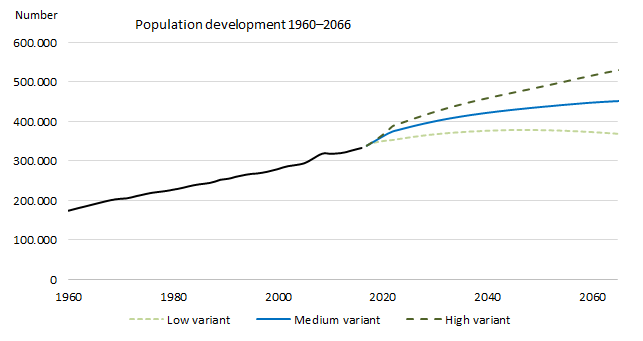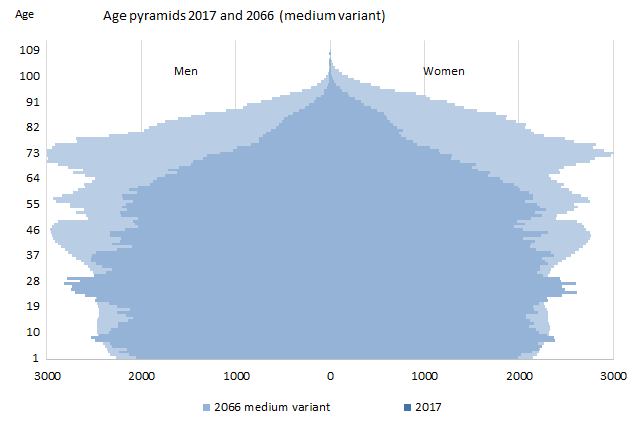The Icelandic population will grow, from 338 to 452 thousand persons in the next 50 years, due to both migration and natural increase, according to the medium projection variant. The high variant predicts a population of 531 thousand while the low variant projects 367 thousand inhabitants. The projection variants are based on different assumptions about economic growth, fertility and migration levels.
The national projections for the years 2017–2066 describe the size and structure of the future total population. The forecast is based on statistical models for migration, fertility and mortality.

Births exceed deaths and life expectancy increases
The number of births per year will exceed the number of deaths per year during the entire period, for high and medium variants. Life expectancy at birth for both men and women will continue to grow. Girls born in 2066 can expect to be 88.6 years old and boys 84.4, but average life expectancy in Iceland is now 83.8 years for women and from 79.7 for men.
Immigration rates are expected to exceed emigration rates, which is mainly due to a growth in foreign immigration to Iceland. The number of emigrating Icelandic citizens will continue to be higher than the number of returning citizens.
More than a quarter of the population over 65 years old from 2057
By 2039, 20% of the population will be older than 65 years and by 2057 the percentage will be over 25%. After 2047, the population aged 65 and over will be more numerous than the population under 20 years old.

Although the population is ageing and the population growth rather slow, the Icelandic population is and will be younger than in most European countries, where more than one third of all people will be over 65 years old in 2060 compared with only a quarter in Iceland.
Population projections 2017–2066 - Statistical Series